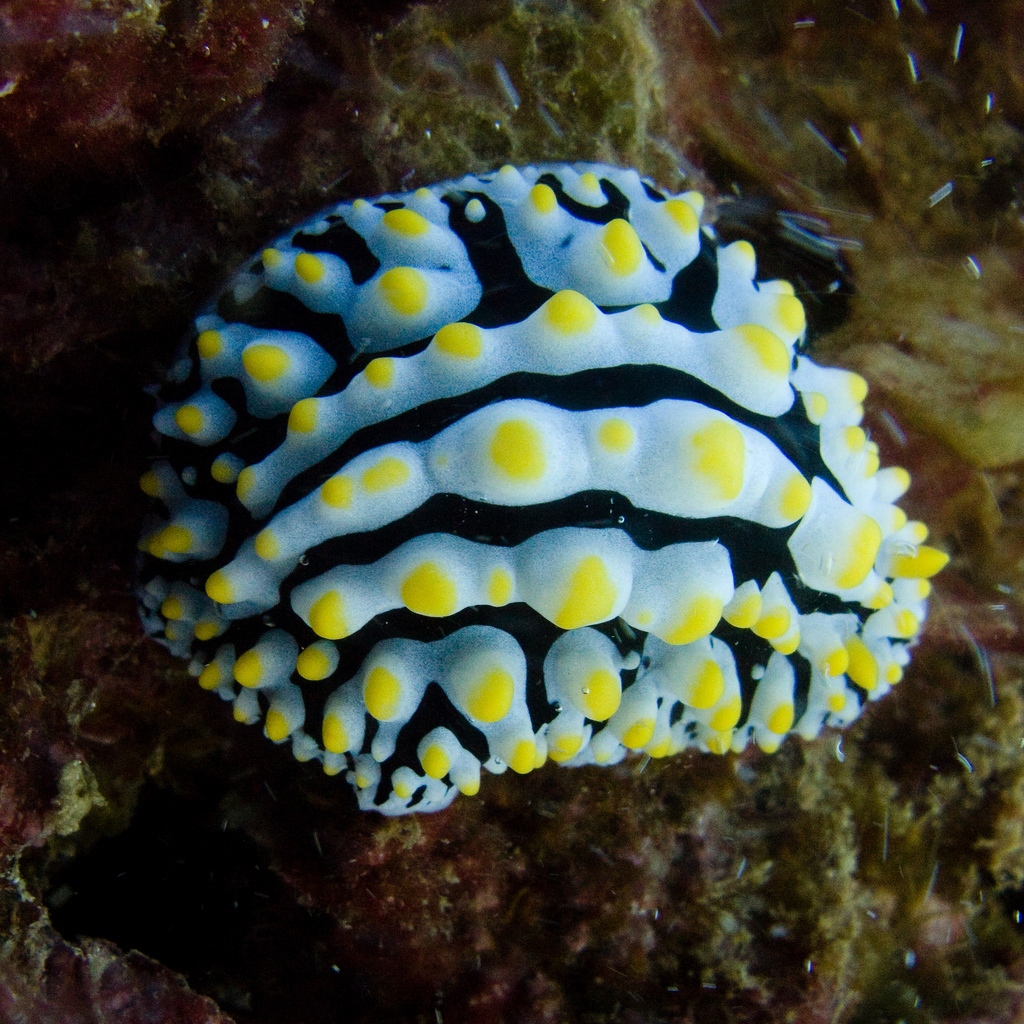Errr. . . not what you may be thinking. Women do not walk topless on nudibranchs. : )

http://www.flickr.com/photos/ken-ichi/ / CC BY-NC-SA 2.0 I need the bathtub toy version of this, preferably with squeaker.
I’m back alive from Hawaii (yay!) and working on an account of what happened with my planned pelagic night dive (and whether I worked up the courage to do it! : ) ). In the meantime, enjoy this photo (not mine) of a species of nudibranch that I encountered on one of my dives. It goes by the somewhat undignified name of the varricose phyllidia, or fried-egg phyllidia (Phyllidia varicosa).
Nudibranchs (an unholy bilingual union of the Latin for “nude” and Greek for “gills” pronounced “nu’-di-brank”) are naked mollusks sometimes called sea slugs, but so are a lot of unrelated things, so wikipedia gives the impression that that is now officially frowned upon. But why even bother calling them sea slugs when nudibranch is so much fun? These organisms are among the most beautiful and psychadelically colored invertebrates on earth. Because they lack shells, they’ve developed other methods for predator deterrence, including the acquisition of several nasty toxins, stinging cells, and tentacle gestures from other organisms. Like poison dart frogs and some poisonous species of snake, caterpillar, and butterfly, being poisonous seems to work best when you are brightly colored enough to help predators remember that they hated eating you (or rather, one of your less fortunate and swiftly regurgitated kin). Here’s how the gastropods, of which nudibranchs are a member, fit into the mollusks.
Other biodiversity highlights of my dives, hikes, and trip to the Hawaii Tropical Botanical Garden included (and none of these photos or video are mine but they amply serve here) several divided flatworms; a conch that pounced on a sea urchin; hard-working sargeant majors guarding their blue egg masses plastered on rocks from hordes of ne’er-do-well marauding fish (watching this free-for-all was one of the best arguments for pregnancy that I have ever seen); a night-hunting yellow-fringed moray eel that pounced and (as per usual, I understand) missed (divers in Hawaii seem perplexed at how moray eels manage to survive); many Hawaiian lichens including shrubby reindeer lichens and pixie cups sprouting from pixie cups near the Kilauea Iki crater; the stunning native ohia trees with their brilliant red-stamened lehua blossoms; some sort of lycopod (very exciting to see in Hawai’i!), gold dust day geckos aplenty; saffron finches; Cook pines; and an explosion of Heliconias, orchids, wild gingers, ti plants (whose leaves composed the famous “grass” skirts of Hawaiians), and “Beware of Falling Mangoes” signs at the botanic gardens. Considering acquisition of “Beware of Falling Mangoes” sign.
More soon!


{ 2 comments… read them below or add one }
can’t wait!
I went snorkling in Shark’s Cove (north shore of Oahu) on Saturday and saw a turtle. That was the extent of my close Hawaiian encounters this time around. But to me, any day I see a turtle is a great day, as they are my favorite.
Love the turtles too. I put a photo of some we saw snoozing on the beach (sans cabana chair) in the next post.